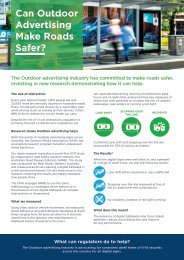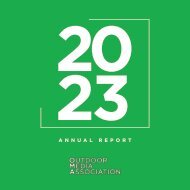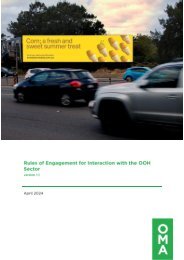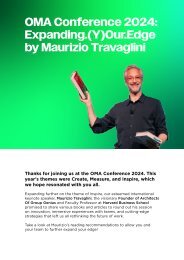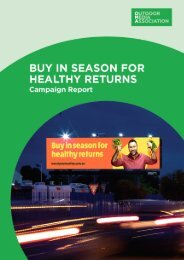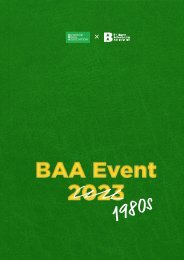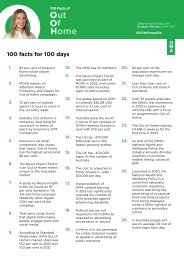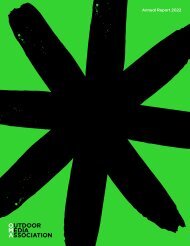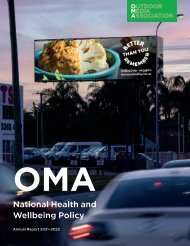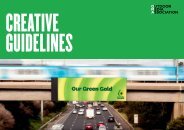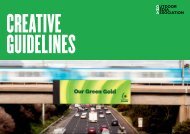OPEN 2
The OPEN series was born from the desire to create a forum for applauding and interrogating strong creative design within the Out of Home (OOH) industry. Illustrating how OOH is part of our cityscape, our commute, our weekend and our shopping and holiday experiences, OOH is ‘the original tweet’ and it cannot be switched off, ignored or fast forwarded. Big, bold, cheeky, simple, clever and controversial, OOH is the ultimate creative stage, allowing brands to be unique, contextually relevant and targeted while reaching mass audiences.
The OPEN series was born from the desire to create a forum for applauding and interrogating strong creative design within the Out of Home (OOH) industry. Illustrating how OOH is part of our cityscape, our commute, our weekend and our shopping and holiday experiences, OOH is ‘the original tweet’ and it cannot be switched off, ignored or fast forwarded. Big, bold, cheeky, simple, clever and controversial, OOH is the ultimate creative stage, allowing brands to be unique, contextually relevant and targeted while reaching mass audiences.
You also want an ePaper? Increase the reach of your titles
YUMPU automatically turns print PDFs into web optimized ePapers that Google loves.
HUMOUR ME<br />
Nigel Marsh, Chairman,<br />
The Leading Edge<br />
...<br />
I’m the wrong person to ask about Out-of-<br />
Home (OOH) advertising. I’m utterly biased.<br />
Ever since I moved to London at the<br />
start of my career I was smitten by the clever<br />
posters I would walk past on my way to work.<br />
Far from viewing OOH as visual pollution,<br />
I thought it made the cityscape nicer (a view<br />
rather dramatically reinforced and solidified<br />
by a trip behind the Berlin Wall that winter).<br />
The moment I saw the famous ‘I never read The<br />
Economist. (Management trainee. Aged 42.)’<br />
poster, I made a decision that I wanted<br />
to work at the agency responsible for creating it.<br />
Twelve months and a series of happy accidents<br />
later, I was indeed lucky enough to turn up for<br />
my first day of employment at said agency<br />
– AMV BBDO.<br />
Looking back, I didn’t realise how lucky<br />
I was. For eight years I watched some of the<br />
most famous and effective poster advertising<br />
ever seen being written, sold and produced.<br />
The Economist campaign defied all expectations<br />
and continued to raise the bar: most memorably<br />
on one occasion turning the tops of London<br />
double-decker buses into giant 48-sheet posters<br />
with the headline, ‘Hello to our readers in<br />
high office’; on another producing a billboard<br />
campaign that consisted purely of a blank red<br />
poster with a small model of a fly stuck on the<br />
top right-hand corner – no headline, no logo.<br />
Amazing ground-breaking stuff. And boy was<br />
it effective.<br />
We broke all the rules and produced a car<br />
campaign for Volvo that didn’t have any cars<br />
in it, just the line, ‘Cages save lives’ above<br />
pictures of scenarios such as a diver in a cage<br />
being attacked by a great white, with the Volvo<br />
logo below.<br />
Of course, it wasn’t just AMV BBDO<br />
leading the charge. There were a number of<br />
agencies doing amazing poster campaigns at<br />
the same time – everyone trying to out-do each<br />
other; indeed, my all-time favourite poster<br />
came from a competitor. It was for the new<br />
Volkswagen Polo. Far from having no cars<br />
in it, it was simply a huge pack shot of the new<br />
model with the headline, ‘The New Volkswagen<br />
Polo’ and underneath, next to the logo, a small<br />
byline, “We never said the old one was perfect.”<br />
Brilliant. Such confidence. And humour. And<br />
simplicity. So perfectly on-brand, understated,<br />
and appealingly humble. You can just imagine<br />
all the reasons NOT to do that poster: “Ooh<br />
be careful! You’re criticising the company!”<br />
or “You’ll upset all our customers who have<br />
bought a previous model” etc. Of course, back<br />
in the real world, no one was upset, everyone<br />
got it and felt all the more fondly of Volkswagen<br />
as a result.<br />
My love of good posters has its<br />
downsides. I can’t see a bad one without<br />
feeling a desire to call up the client and explain<br />
where they’re going wrong. My wife rightly<br />
points out that it’s got nothing to do with me<br />
but I just can’t help myself. Someone should<br />
have told them that their art direction is too<br />
fussy and the copy too small to read standing<br />
five feet away, let alone from a passing car. Or<br />
that their agency has committed the cardinal<br />
sin (in my eyes) of the ‘irrelevant attention<br />
grab’, any idiot can get your attention (naked<br />
body, dead body, swear word, etc). It’s doing<br />
it in a branded, compelling, relevant way that<br />
takes skill. And art, if I’m being totally honest.<br />
I believe good posters are art. And I’m not just<br />
talking about the stuff that Toulouse-Lautrec<br />
and his contemporaries produced in France<br />
in the late 1890s. I’m talking about the stuff<br />
produced now.<br />
But does it work? Well, one of the utter<br />
joys of my role here at The Leading Edge is that<br />
I have been exposed to decades of research<br />
39 /



